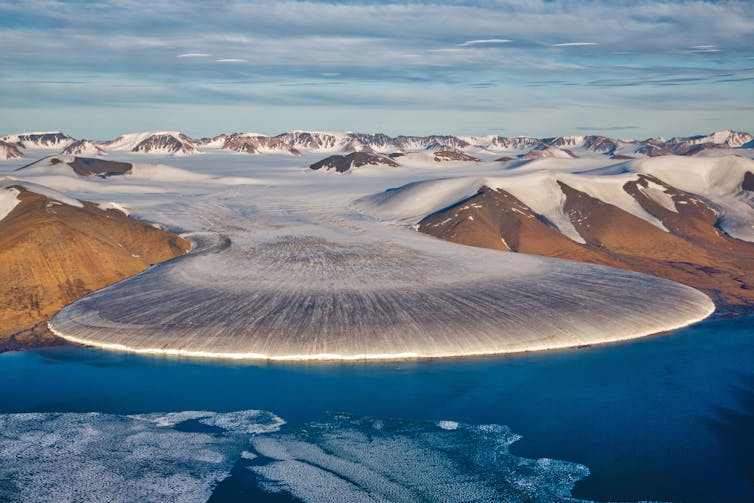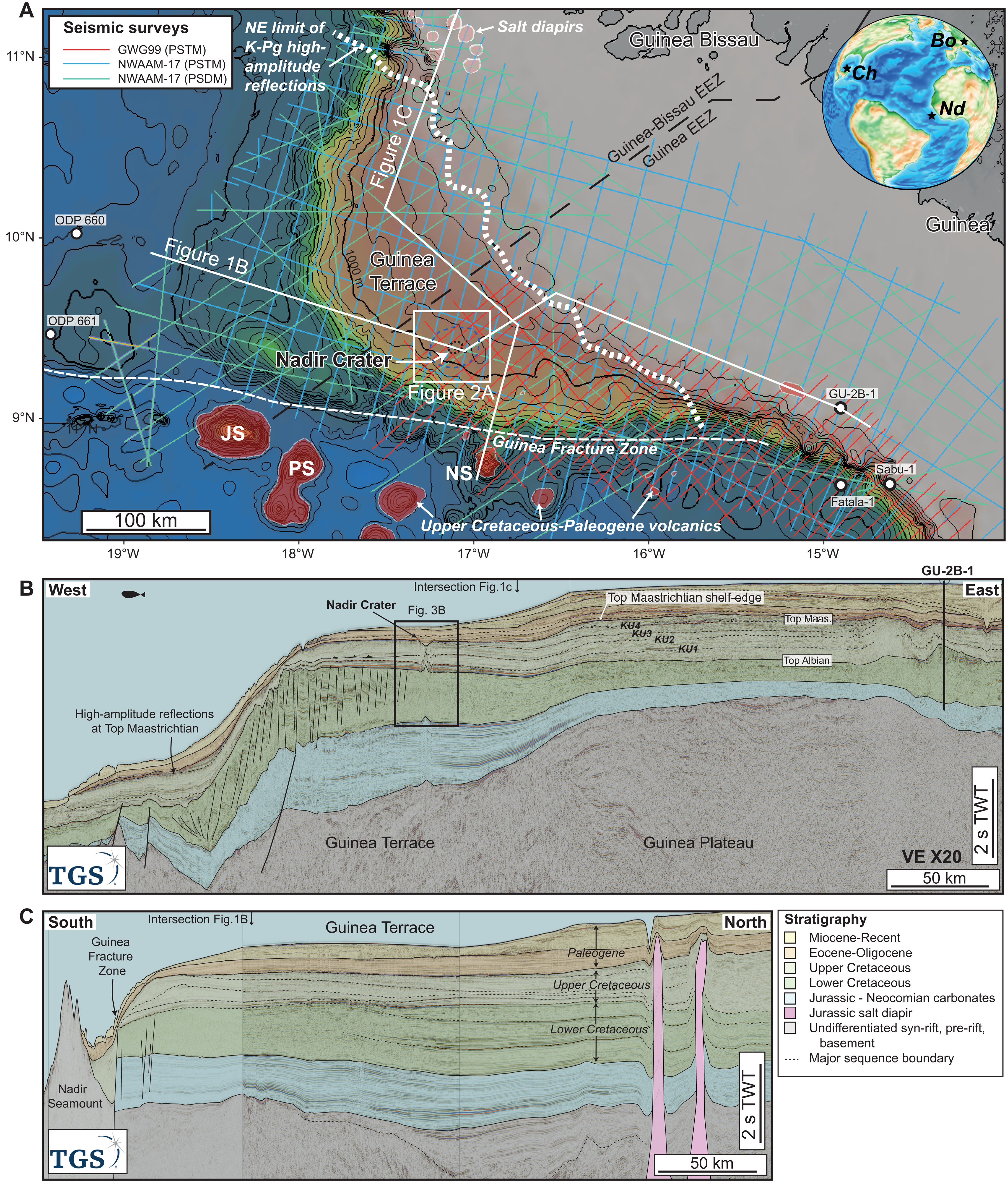A heat wave in Greenland and a storm in Antarctica. These kinds of individual weather “events” are increasingly being supercharged by a warming climate. But despite being short-term events they can also have a much longer-term effect on the world’s largest ice sheets, and may even lead to tipping points being crossed in the polar regions.
We have just published research looking at these sudden changes in the ice sheets and how they may impact what we know about sea level rise. One reason this is so important is that the global sea level is predicted to rise by anywhere between 28 cm and 100cm by the year 2100, according to the IPCC. This is a huge range – 70 cm extra sea-level rise would affect many millions more people.
Partly this uncertainty is because we simply don’t know whether we’ll curb our emissions or continue with business as usual. But while possible social and economic changes are at least factored in to the above numbers, the IPCC acknowledges its estimate does not take into account deeply uncertain ice-sheet processes.
Sudden accelerations
The sea is rising for two main reasons. First, the water itself is very slightly expanding as it warms, with this process responsible for about a third of the total expected sea-level rise.
Second, the world’s largest ice sheets in Antarctica and Greenland are melting or sliding into the sea. As the ice sheets and glaciers respond relatively slowly, the sea will also continue to rise for centuries.

Scientists have long known that there is a potential for sudden accelerations in the rate at which ice is lost from Greenland and Antarctica which could cause considerably more sea-level rise: perhaps a metre or more in a century. Once started, this would be impossible to stop.
Although there is a lot of uncertainty over how likely this is, there is some evidence that it happened about 130,000 years ago, the last time global temperatures were anything close to the present day. We cannot discount the risk.
To improve predictions of rises in sea level we therefore need a clearer understanding of the Antarctic and Greenland ice sheets. In particular, we need to review if there are weather or climate changes that we can already identify that might lead to abrupt increases in the speed of mass loss.
Weather can have long-term effects
Our new study, involving an international team of 29 ice-sheet experts and published in the journal Nature Reviews Earth & Environment, reviews evidence gained from observational data, geological records, and computer model simulations.
We found several examples from the past few decades where weather “events” – a single storm, a heatwave – have led to important long-term changes.
The ice sheets are built from millennia of snowfall that gradually compresses and starts to flow towards the ocean. The ice sheets, like any glacier, respond to changes in the atmosphere and the ocean when the ice is in contact with sea water.
These changes could take place over a matter of hours or days or they may be long-term changes from months to years or thousands of years. And processes may interact with each other on different timescales, so that a glacier may gradually thin and weaken but remain stable until an abrupt short-term event pushes it over the edge and it rapidly collapses.
Because of these different timescales, we need to coordinate collecting and using more diverse types of data and knowledge.
Historically, we thought of ice sheets as slow-moving and delayed in their response to climate change. In contrast, our research found that these huge glacial ice masses respond in far quicker and more unexpected ways as the climate warms, similarly to the frequency and intensity of hurricanes and heatwaves responding to changes with the climate.
Ground and satellite observations show that sudden heatwaves and large storms can have long-lasting effects on ice sheets. For example a heatwave in July 2023 meant at one point 67% of the Greenland ice sheet surface was melting, compared with around 20% for average July conditions. In 2022 unusually warm rain fell on the Conger ice shelf in Antarctica, causing it to disappear almost overnight.
These weather-driven events have long “tails”. Ice sheets don’t follow a simple uniform response to climate warming when they melt or slide into the sea. Instead their changes are punctuated by short-term extremes.
For example, brief periods of melting in Greenland can melt far more ice and snow than is replaced the following winter. Or the catastrophic break-up of ice shelves along the Antarctic coast can rapidly unplug much larger amounts of ice from further inland.
Failing to adequately account for this short-term variability might mean we underestimate how much ice will be lost in future.
What happens next
Scientists must prioritise research on ice-sheet variability. This means better ice-sheet and ocean monitoring systems that can capture the effects of short but extreme weather events.
This will come from new satellites as well as field data. We’ll also need better computer models of how ice sheets will respond to climate change. Fortunately there are already some promising global collaborative initiatives.
We don’t know exactly how much the global sea level is going to rise some decades in advance, but understanding more about the ice sheets will help to refine our predictions.

Don’t have time to read about climate change as much as you’d like?
Get a weekly roundup in your inbox instead. Every Wednesday, The Conversation’s environment editor writes Imagine, a short email that goes a little deeper into just one climate issue. Join the 30,000+ readers who’ve subscribed so far.
Edward Hanna, Professor of Climate Science and Meteorology, University of Lincoln and Ruth Mottram, Climate Scientist, National Centre for Climate Research, Danish Meteorological Institute
This article is republished from The Conversation under a Creative Commons license. Read the original article.











